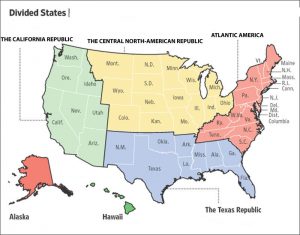A Republican guy friend recently asked me: Does everything in your life lead back to Me Too?
Now in the old days, I would never define my friends as Democrats or Republicans.
But that was waaay back when, before you-know-who.
Plus, my friend’s question was laced with thinly veiled skepticism, while shoving in some other hurtful rhetoric about protecting men and boys, with poor Judge Kavanaugh thrown in.
I felt anger, frustration, sadness, and madness. But I kept my mouth shut.
I regret that I did not answer him, but I was afraid that if I did, something vitriolic would pour out of my mouth, and that I might later regret my words.
Regret vs. regret.
Yesterday I saw a movie trailer about Dumbo, directed by Tim Burton, to be released March 29, 2019.
As I watched Dumbo soar over the crowd, I got full body goosebumps.
Good for you, Dumbo.
And then just like that, those sicko images crept into my brain.
[Push em out push em out.]
My elephant.
As a kid, I loved Dumbo. He was so relatable. He was an only child, no father (although his name was Jumbo Jr.), with a fiercely protective mother. I would often wonder what happened to his dad, and rationalized in my head that if Jumbo Sr. was in the picture, he would have saved his kid.
Poor Jumbo was taunted and bullied for his big ears—and given the cruel name of Dumbo.
He was ridiculed and treated poorly, but he was sincere, naïve, kind, and truly magical.
Sure, he had big ears, but oh my how he could soar and fly.
Aside from his mom, his only friend was a mouse named Timothy, who believed in him.
And then there was that crow, named Jim Crow, who first made fun of Dumbo, but then convinced him that he could fly with a magic crow feather. (And yes, his name was indeed Jim Crow.)
My favorite part in the movie was when Dumbo was getting ready to fly off the platform in the circus act and prove himself as worthy of love and respect.
I can so vividly recall that first time I watched in horror as Dumbo stumbled off that platform.
I was young, but I will never forget how I silently rooted and prayed that Dumbo would prove all of his tormentors wrong, change his life, and live happily ever after with his mom.
“Lord have mercy,” I will never forget praying to myself, parroting what my grandmother always said.
[Okay, so I can’t remember actual dates, and times, or when it started, or how I got there, or why I was alone, or lots of it, so how can I remember Dumbo and Lord have mercy?]
And then there was that happy ending; that memorable and joyous part when the feather falls out of Dumbo’s trunk, and he realizes that his greatness comes not from the magic feather, but from within himself.
The feather wasn’t his savior; he was his savior. It was up to Dumbo to save Jumbo.
And at that last final moment, Dumbo opened up his ears and soared over the incredulous crowd, proving to them that he was special.
Dumbo, the maligned, became Jumbo, the respected; the hero of the circus.
Why all this talk of Dumbo/Jumbo?
Because watching that trailer about Dumbo triggered Me Too.
Why? I have no clue.
But it triggered something that I had forgotten. One small nagging thing that for years I couldn’t remember.
But now I know.
Before Me Too I referred to my “issues” as “the elephant in the room.”
Unlike Disney Dumbo my elephant was dark and menacing, popping up here and there, in the unlikeliest and often inopportune of times.
Anywhere and everywhere, any occasion, every movie, any song, any anything, or, or, or.
Those despicable visions creeping up and in.
Despicable me and my despicable elephant.
“The elephant in the room” has been in that damn room with me for my entire life.
Actually, “the elephant in the room” has been with me in every room, in every corner, for every second, of every day, no matter where I go or who I’m with, or, or, or.
I know many of you are thinking: Get over it.
Don’t you think I want to? Who would want to live like this?
The answer to my friend’s question should and could have been a simple one: Lord have mercy, yes.



